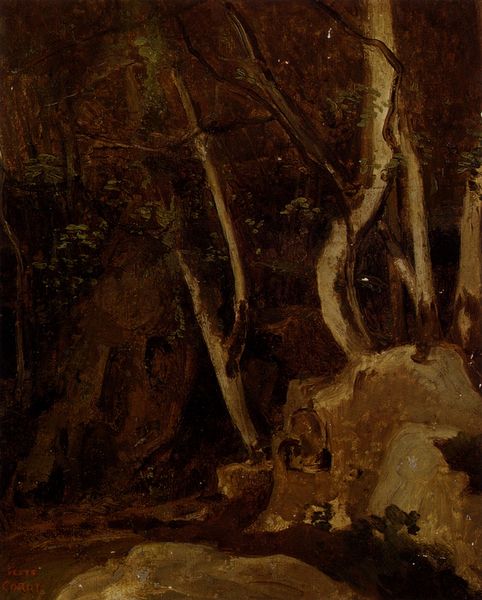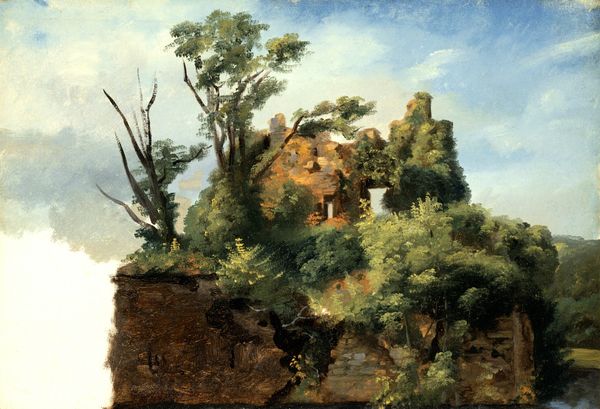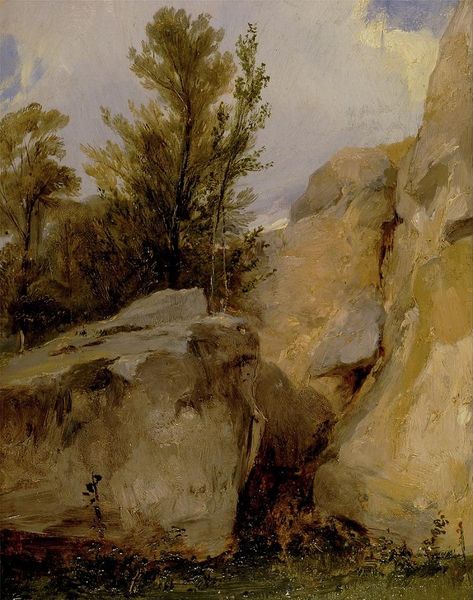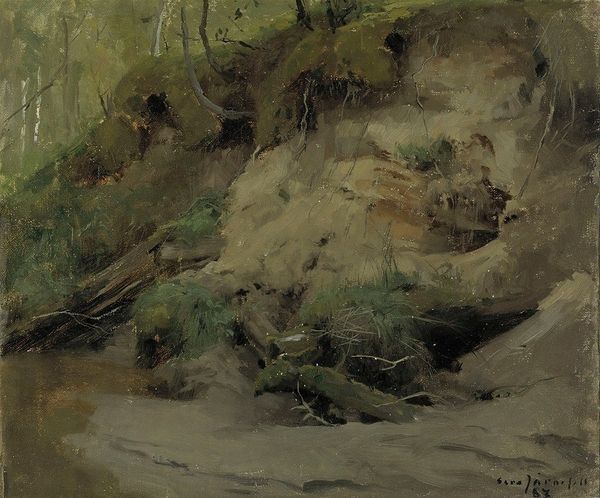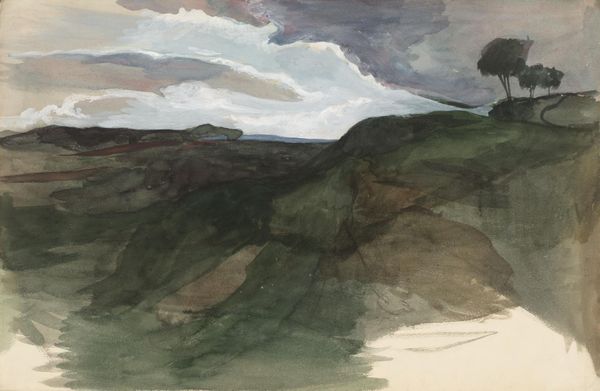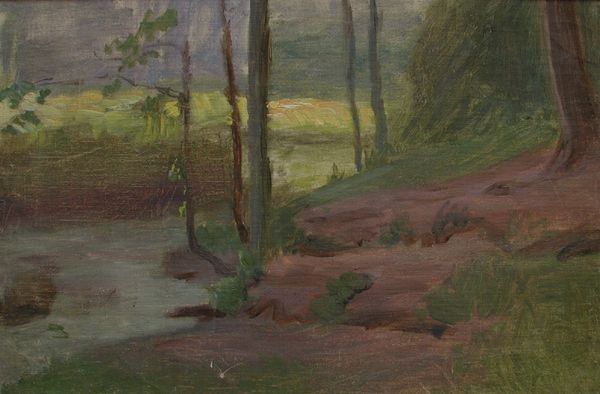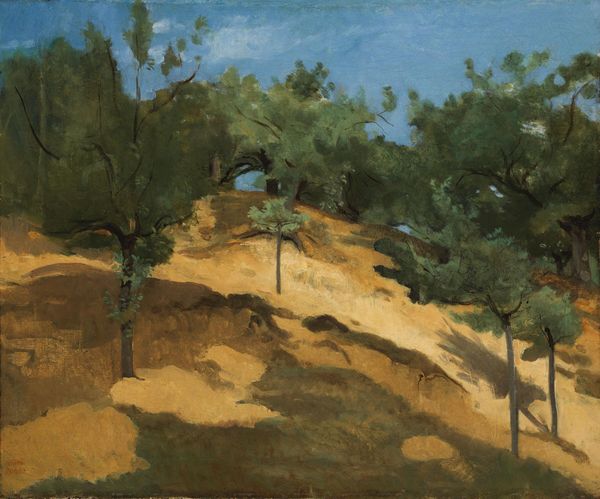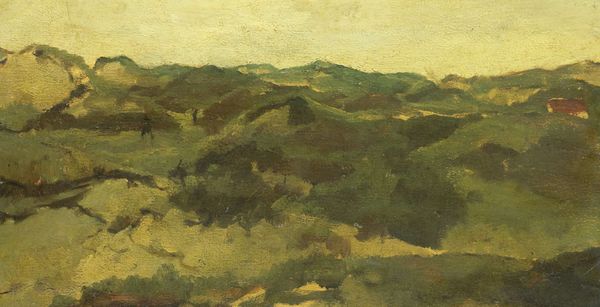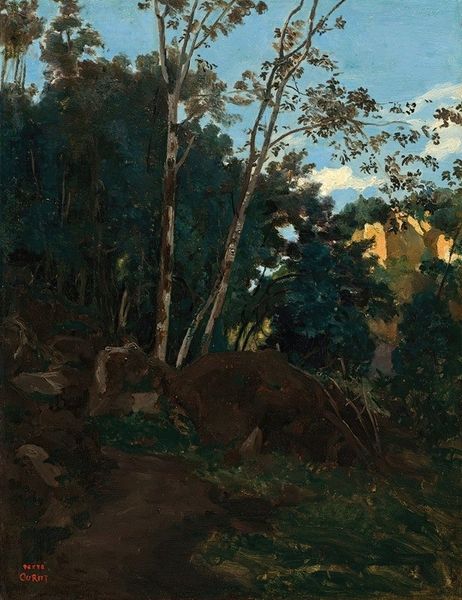
painting, plein-air, oil-paint
#
painting
#
plein-air
#
oil-paint
#
landscape
#
charcoal drawing
#
oil painting
#
romanticism
#
realism
Copyright: Public Domain: Artvee
Editor: Here we have Camille Corot’s "Forêt de Fontainebleau – Au plateau brûlé", painted in oil on canvas. It has a very raw feel to it, the landscape reduced to almost sculptural forms. What do you see in this piece? Curator: As a materialist, I find the rough handling of the paint surface intriguing. Corot wasn’t just representing the forest; he was engaging with the very materials that constitute artmaking. What kind of labour do you imagine went into preparing the pigments for this oil paint? Editor: That’s fascinating, I never thought about the actual production of the materials. Is that what gives the landscape such an earthy, almost tactile quality? Curator: Precisely! Think about the industrial context of the mid-19th century. Corot's plein-air approach represents a direct, unmediated relationship with nature. How does this resist, or perhaps comment on, the rising industrialization of France at that time? Editor: I suppose it's a contrast, then. While factories churned out products, Corot was manually crafting these earthy pigments and directly observing the landscape. Is there a statement about labor, about craft, even in choosing to paint a landscape rather than a historical scene? Curator: Exactly! Consider the materials available, the means of distribution, and the audience for such paintings. Were these works destined for private collections, reinforcing existing class structures, or did they democratize art by making landscapes more accessible? Editor: I see, it makes me consider the consumption of art and who gets to appreciate these landscapes, both in paint and in reality. Curator: It pushes us to think beyond simple aesthetics and engage with the socioeconomic forces that shaped not only the subject matter, but also the artwork’s materiality. Editor: That is truly interesting, a completely different perspective from what I would expect. Curator: Indeed, and by shifting the focus to materials and process, we see a broader and more inclusive picture of art history.
Comments
No comments
Be the first to comment and join the conversation on the ultimate creative platform.

